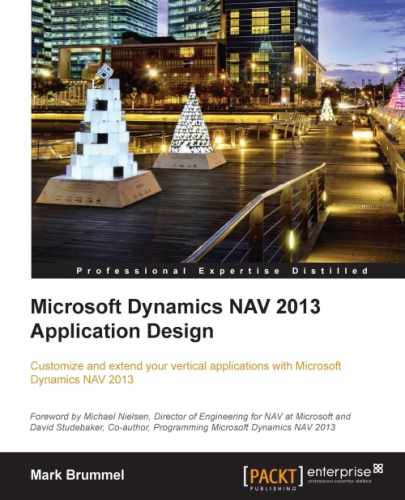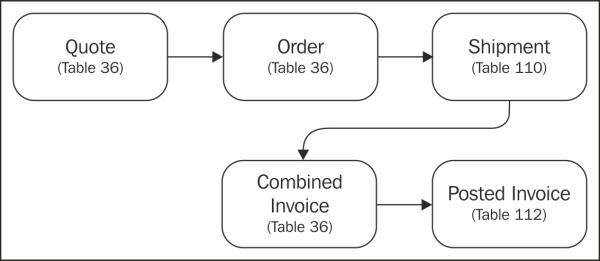 Combining the journals into processes
by Mark Brummel
Microsoft Dynamics NAV 2013 Application Design
Combining the journals into processes
by Mark Brummel
Microsoft Dynamics NAV 2013 Application Design
- Microsoft Dynamics NAV 2013 Application Design
- Table of Contents
- Microsoft Dynamics NAV 2013 Application Design
- Credits
- Foreword
- About the Author
- Acknowledgments
- About the Reviewers
- www.PacktPub.com
- Preface
- 1. Introduction to Microsoft Dynamics NAV
- Versions and history
- What is this book about
- Setup versus customization
- The beauty of simplicity
- Design patterns
- Structure of this book
- The Role Tailored concept
- The building blocks
- Dynamics NAV in throughout supply chain
- Some basic design patterns
- Architectural design patterns
- Balancing
- Flow fields and flow filters
- More journals and entries
- Combining the journals into processes
- Other patterns
- Summary
- 2. A Sample Application
- 3. Financial Management
- 4. Relationship Management
- How companies work
- Customizing relationship management
- Summary
- 5. Production
- What is production?
- Basic production principles
- Getting started
- Assembling
- Design patterns
- The items
- Item costing
- Item tracking
- The bill of materials
- Calculating the standard cost
- Creating the inventory
- Adjusting cost item entries
- Posting inventory cost to G/L
- Check, check, and double check
- Recalculating the standard unit cost
- Assembly orders
- Check costing (again)
- Recalculating the unit cost (again)
- Standard cost worksheet
- Item Revaluation Journal
- The result
- Summarizing item costing in 10 steps
- Manufacturing
- Specialized production
- Assembling
- Vertical industry implementation
- Summary
- 6. Trade
- The process
- Sales and purchasing
- Inventory management
- Warehouse management
- Reservations
- Trade in vertical industries
- Summary
- 7. Storage and Logistics
- 8. Consulting
- 9. Interfacing
- Interface types
- Interfacing technologies
- Standard application interfaces
- Interface methodologies
- Interfacing into the future
- Summary
- 10. Application Design
- Application life cycle
- Design to use
- Design to Maintain
- Design to support
- Design to upgrade
- Design to perform
- Design to analyze
- Version and object management
- Development methodology
- The project
- Summary
- Application life cycle
- A. Installation Guide
- Index
The journal and entry tables make it possible for us to do the basic balancing in our company but people in companies are not used to working with journals.
Traditionally, companies work with documents. This was also the case before ERP applications were introduced. A sales representative would travel through the country with a paper order block and then come back to the back office. The back office then ships the orders with shipping documents and invoices.
Microsoft Dynamics NAV supports working with documents. Traditionally, we divide the documents in sales and purchasing documents but the later versions of Microsoft Dynamics NAV also have warehouse documents. Other supported documents are reminders and service documents.
A document in Microsoft Dynamics NAV always has a header and lines. The header contains the basic information about the transaction, such as shipment dates, addresses, and payment terms.
The lines contain information about what is sold or purchased. This can be a variety of G/L Accounts, items, and resources.
A document can have different stages depending on the type of the transaction. A quote is a typical starting point in the sales or purchasing process. When a quote is approved, it can be promoted to an order, which is then shipped and invoiced. The process can be also reversed via a return order resulting in a credit memo.

Transactions in the database can be started via documents. When a document is processed, the necessary journals are automatically populated. For example, when an order is shipped, the goods leave the warehouse, then an Item Journal is created and posted to handle this. When the invoice is posted, a General Journal is generated to create G/L Entries and a Customer or Vendor Ledger Entries.
-
No Comment